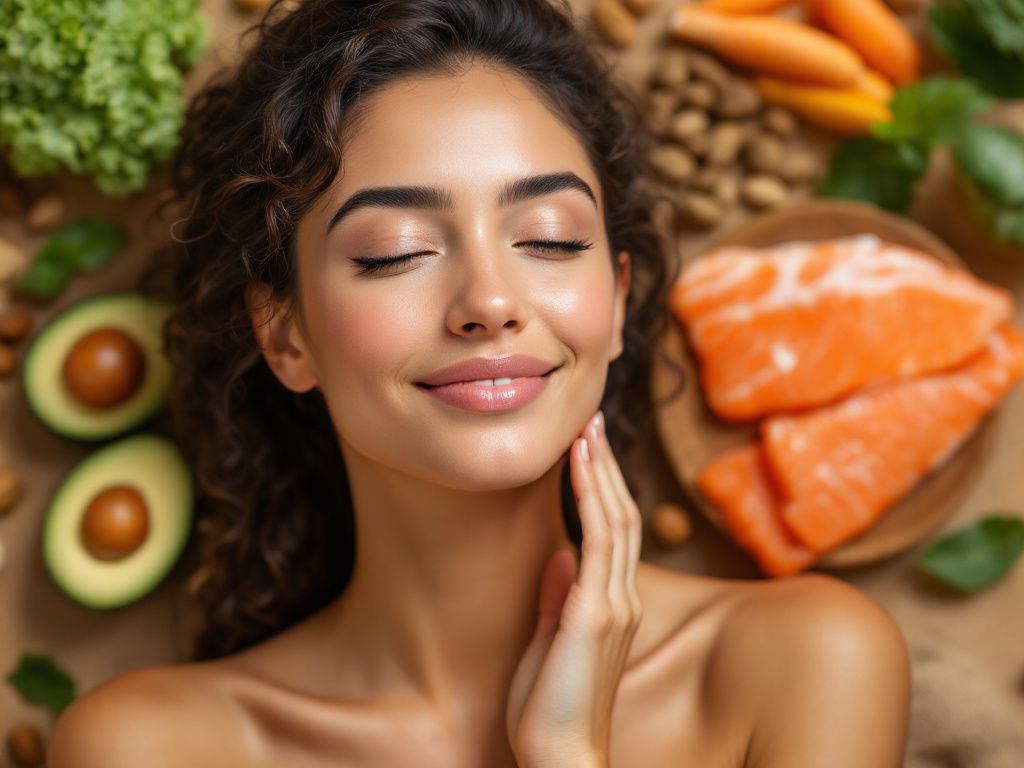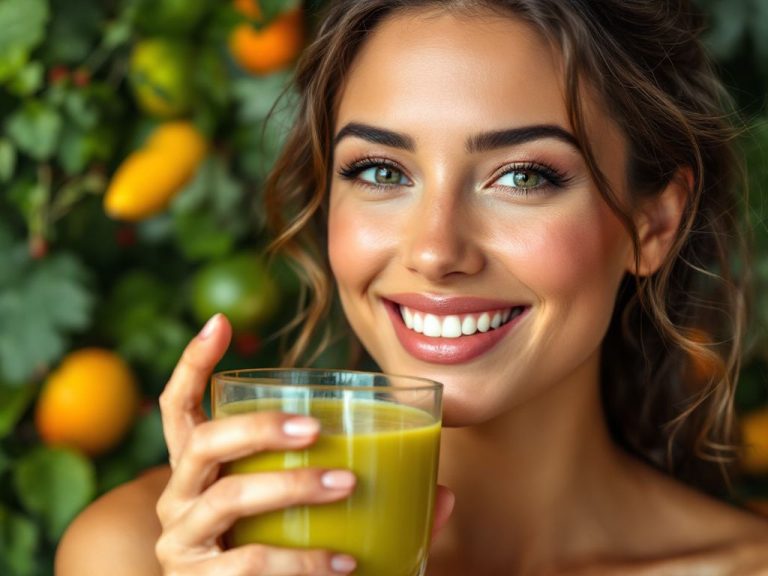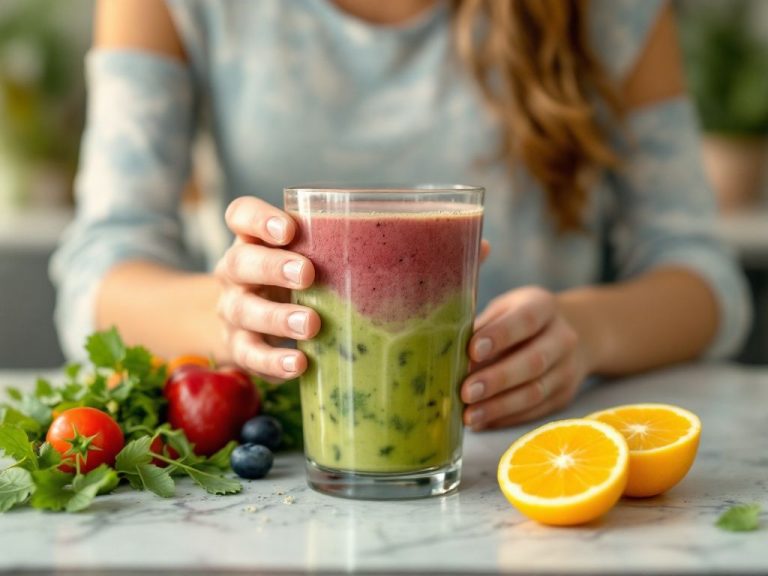Ever find yourself staring into the mirror, frustrated by yet another unexpected breakout, despite dedicating yourself to a rigorous skincare routine? It’s pretty common to blame environmental factors or last night’s late-night snack. But here’s the thing, what if the solution lies with something you haven’t considered much at all—something like nutrients?
More specifically, let’s chat about the benefits of healthy fats and how they can subtly, yet powerfully, influence your skin’s appearance. OK, I get it, you might be thinking, “Wait, fat is good for my skin?” Yes! The truth is, not all fats are created equal, and some fats, known as essential fats, play a vital role in maintaining skin health. Let’s dig in more.
Table of Contents
ToggleUnderstanding Healthy Fats
First up, let’s talk types. When we talk about healthy fats benefits, it’s those unsung heroes like omega-3 and omega-6 fatty acids we’re highlighting. These guys fall under the polyunsaturated fat category. Why do they matter so much? Well, they’re considered essential fats for a reason—our bodies can’t make them. We’ve got to find them in our food.
Break it down to the basics, and healthy fats are comparable to balancing an art canvas. Extremes either way—a shortage or an excess—can throw the whole picture off. What we often forget is that our skin needs this balance. Maybe because it’s not as visible as an ingredient cream you slap on your face twice daily. But dive a little deeper, and you’ll find fats ticking away to make sure your skin holds up its end of the bargain.
Types of Healthy Fats
There are three main types:
- Monounsaturated fats – Found in foods like avocados and nuts.
- Polyunsaturated fats – Talk ‘bout omega-3s and omega-6s here, found in fatty fish like salmon and seeds such as flaxseed.
- Saturated fats – Think coconut oil or butter, but remember moderation is key here.
Saturated fats can support skin too, but overdo them and the impacts might backtrack.
How Healthy Fats Benefit Your Skin

Let’s not get all science-y, but a minimal dive into how these fats benefit your skin could totally flip the “why should I care?” switch.
1. Moisturize and Hydrate Naturally
Ever notice how a wilted plant looks once you give it water? picture that, but on your skin. Omega-3 fats help lock in moisture, so your skin doesn’t look dull, flaky, or as tired as you might feel on some Mondays.
2. Reduce inflammation
Inflammation is that itchy, sore area on your face that screams trouble. Omega-3s can reduce inflammation, assisting with chronic conditions like eczema or psoriasis. Less inflammation often translates into fewer breakouts and a smoother surface.
3. Support Skin Barrier Function
Think of your skin’s barrier as a durable, protective wrap akin to an apple’s peel or a car’s wax coat. Essential fats maintain the cell membrane health, making sure that barrier is functioning optimally. This means better protection against irritants and pathogens.
4. Age Gracefully with Essential Fats
We can’t talk about skin without brushing on the dreaded subject of aging. Let’s be kind and just say that healthy fats may help improve skin elasticity. Less sagging skin bout time you’re getting ready for future reunions.
Incorporating Healthy Fats into Your Diet
No eye rolls here please—it’s actually simple enough to dive into this delicious solution. Here’s how you can add in the goodness of healthy fats day in-day out.
Breakfast:

– Start with avocado on whole-grain toast. – A sprinkle of chia seeds on your oatmeal or yogurt.
Lunch:
– Add some crushed walnuts or pecans to your salad. – Smoked salmon makes an otherwise dull sandwich exceedingly delightful.
Dinner:
– Grill some salmon or trout. – Can’t skip your carbs? A quick drizzle of olive or flaxseed oil on whole grain pasta is chef’s kiss.
Snacks:
– A handful of almonds instead of your typical baggie of chips. – Dark chocolate. Cue happy sighs.
So, what about dessert? Oh, I hear you. Coconut milk in a homemade smoothie, perhaps?
Remember to look out for food labels that state “trans fats” as a stark no-go zone if you’re aiming for healthy fats only.
Potential Pitfalls to Avoid
The road to vibrant skin isn’t typically paved smoothly with bottomless bags of pistachios. Common mistakes await:

- Overconsumption: Even healthy fats, in excessive quantities, can lead to unbalanced omega-3 to omega-6 ratios. So stick to portion guidance.
- Processing pitfalls: Deep-fried wonton fortune may shout “tasty”, but not “healthy” if derived from unhealthy oil choices.
Real Talk: Your Body vs. Your Waistline
Now, one quick note—if clear skin is your aim, don’t glance nervously at the scale. Eating the right fats often curbs your unnecessary snacking, which helps in the long-whole a bit like pulling the until-they-many ropes from a yo-yo—in balance.
Frequent Questions Revolved Around Healthy Fats
You’ll find many repeated questions in curious minds—they merit some addressing (if it promotes a better nutritional scope):
- “How soon will I notice skin changes once I alter my diet?”
Ah, the perennial question of patience vs impatience. Understandably, topical actions seem faster on the uptake verses dietary shifts—change may take two weeks plus for noticeable difference.
- “Can I just take supplements?”
While fish oils or other supplements aren’t evil, they don’t replace varied meals and best paired with a top-tier diet routine.
— Hopefully, now you won’t crane around on whether adding healthy fats benefits your skin regime; the affirmation is resounding. But, always understand skin health surpasses one item; be keen in pairing sunshine-basks, hydration needs, and sleep requirements further-of advocacy efforts. Curious potential command magic moments too.
So, give this diet overhaul a genuine whirl—catch a glimpse of renewal on unexceptionally tough skin types—your epidermis just might be heading above par—toward simply a natural, brighter morning acquaintance soon enough!
Frequently Asked Questions
What are the main types of healthy fats and their benefits?
Healthy fats are primarily categorized into unsaturated fats, which include monounsaturated fats (MUFAs) and polyunsaturated fats (PUFAs). MUFAs, found in foods like avocados, olives, and nuts, help decrease bad LDL cholesterol while maintaining good HDL cholesterol, reducing the risk of cardiovascular disease[1][3][5]. PUFAs, found in fatty fish, flaxseeds, and certain plant-based oils, can decrease bad cholesterol and increase good cholesterol, also reducing cardiovascular risks[1][3][5>.
How do healthy fats contribute to overall health and well-being?
Healthy fats play a crucial role in various bodily functions. They help in the absorption of vitamins A, D, E, and K, support the immune system, regulate body temperature, and provide energy. Additionally, they aid in cell growth, protect organs, and help maintain healthy cholesterol and blood pressure levels[1][2][4>.
What foods are rich in healthy fats that I should include in my diet?
Foods rich in healthy fats include avocados, olives, nuts (such as almonds and walnuts), seeds (like flaxseeds and chia seeds), and oily fish (such as salmon, mackerel, and sardines). Healthy plant-based oils like olive, canola, and sunflower oil are also beneficial[1][3][5>.
Why should I avoid saturated and trans fats, and how do they differ from healthy fats?
Saturated fats, found in foods like butter, cheese, and processed meats, can increase bad LDL cholesterol, raising the risk of heart disease and stroke. Trans fats, often found in hydrogenated plant oils and processed foods, are particularly harmful as they raise bad cholesterol and lower good cholesterol. In contrast, healthy fats like MUFAs and PUFAs help lower bad cholesterol and increase good cholesterol, reducing cardiovascular risks[2][3][5>.
References







